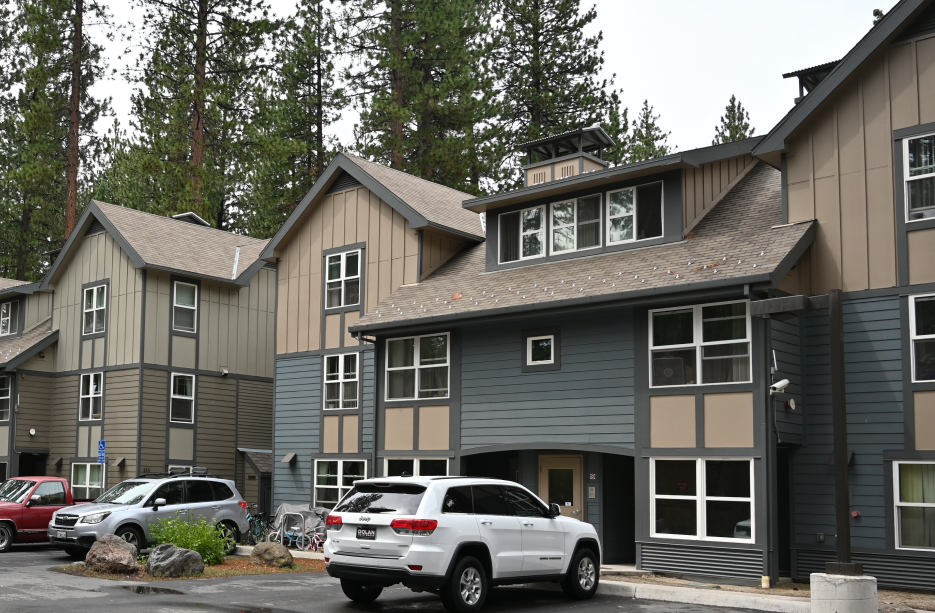Image: The 2012 Kings Beach Housing Now project showed how high-quality workforce housing could be achieved with public and private funding and special code changes. The challenge today is to find a way for builders to deliver more workforce housing on their own.
Some simple changes to Tahoe Regional Planning Agency (TRPA) building codes could start making a big difference in Lake Tahoe’s affordable housing market.
Building codes that protect the lake and harmonize communities with the environment are also making larger homes and luxury residences the most attractive option for property owners who want to redevelop, upgrade, or build new.
Experts studying affordable housing in the basin have shown how construction costs here get lower the bigger you build. The cost of land, fixed costs like kitchens and bathrooms, and TRPA building limits like land coverage* actually lower construction costs as projects get larger.
Building an affordable duplex is estimated to cost $530 per square foot, while a high-end, single-family home could cost around $490 per square foot. Adding to the challenges, experienced apartment and duplex builders are far less common than single-family builders. Creating these multi-family dwelling units takes additional expertise and financial planning on the part of the project owner.
Tahoe agencies need to do more to accelerate multi-family and small-scale projects for local workers and families. This year, TRPA affordable housing planners are bringing forward code amendments targeted to certain locations that would allow multi-family projects to be built with more height and land coverage as long as they are made permanently affordable, also known as deed-restricted.
Staff is currently asking for feedback on the following code changes only for projects that are deed-restricted to lower rates:
- Remove parcel-based land coverage limits in town centers with an area-wide water quality system – similar to some commercial centers.
- Increase parcel-based land coverage limits near transit or in walking distance to a town center, also with an area-wide water quality system.
- Increase allowed height in town centers from approximately three stories to five stories to accommodate more, smaller units – similar to some commercial centers.
- Allow more multi-family units per parcel (higher density) – let building height, setbacks, property size, and living space limit the number of units instead of a specific density limit.
- Reduce parking requirements or remove them – requiring a certain amount of parking spaces reduces building space and car travel is not always preferred by residents. The change would allow the builder and local government agency to determine the amount of parking needed on or offsite to serve residents.
It is important to know that the number of units in the Tahoe Basin will not change by these proposals. Unlike most areas, growth is capped here. But changes are needed to help shift the number of units going to larger, higher-end residences to more workforce housing units.
These incentives and a few other tweaks could continue to protect water quality and help level the redevelopment playing field. If changes are approved by the TRPA Governing Board later this year, it may take some time for new projects to come forward and to know if the policies can help private projects pencil out. Some of the new policies would depend on local Area Plan updates as well.
These are just one phase of improvements TRPA is working on through its Tahoe Living strategic priority.
**Land coverage is any human-made impervious surface, such as buildings, pavement, or compacted soil. Coverage is managed in the Tahoe Basin to protect water quality, soil, and vegetation and to maintain open space. The percentage of a property that can be covered is established by soil type or location. Besides displacing natural processes, impervious surfaces allow rain and snowmelt to pick up speed, cause erosion, and carry fine sediment and other pollutants into the lake or closer and closer to it with every storm event.
*Permanently affordable housing units are kept that way through a deed restriction, which is a contract guaranteeing a property is rented or sold at a certain rate. These are enforceable contracts that stay with the property through all ownership changes.

